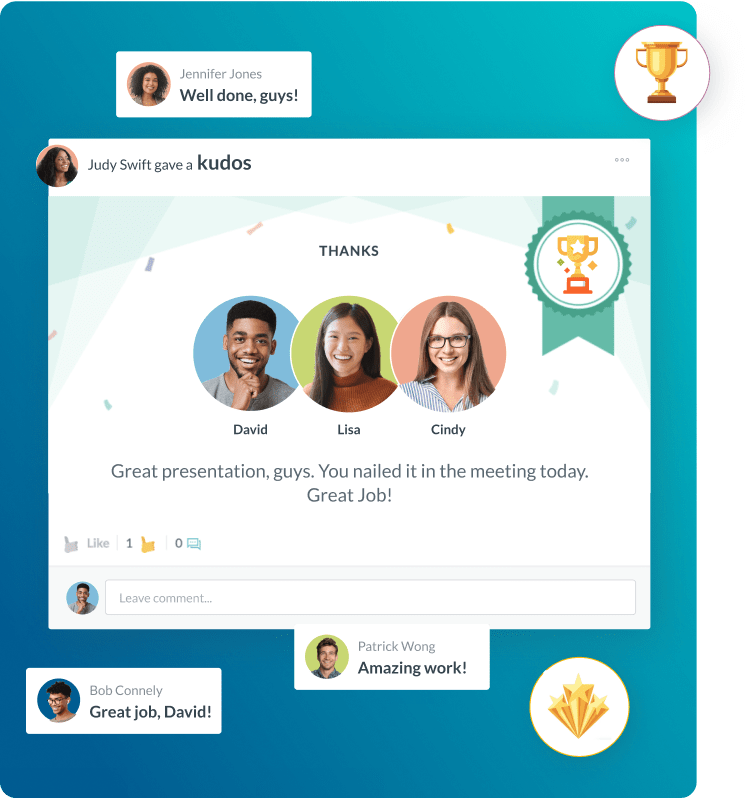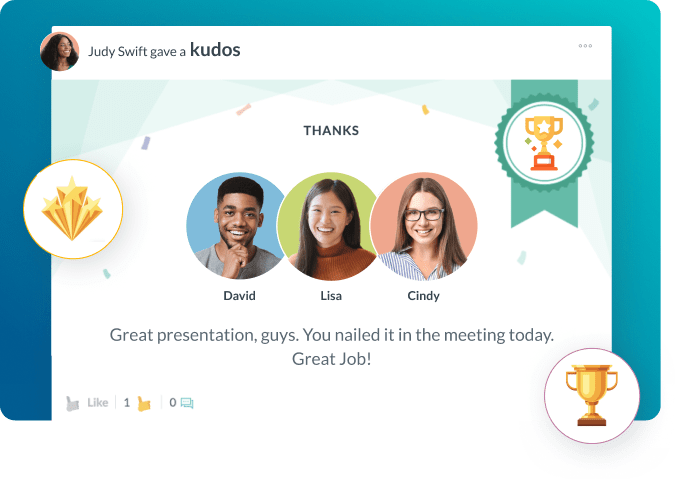Top Performer Program
- Key Points – Main Takeaways for Strategic Investment
- Value-Adding or Comparison Table – Program Differentiation
- Best Practices – Actionable Tips for Program Success
- Pitfalls to Avoid – Common Mistakes That Undermine Success
- Industry Applications – Real-World Business Examples
- Implementation Plan – Step-by-Step Guide for Applying the Concept
- Future Outlook and Trends – What’s Next and How to Prepare
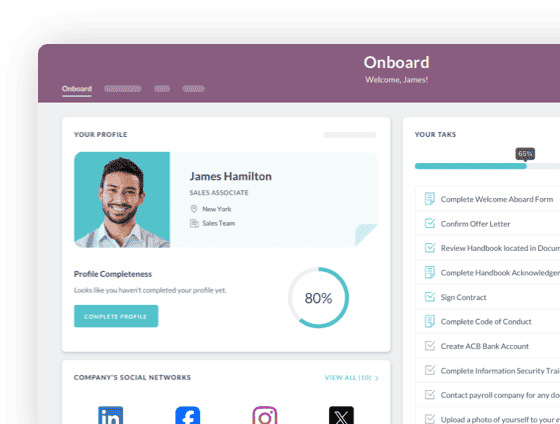
 Cut onboarding time
by 60%—here's the
Ultimate Checklist
that helped do it.
Cut onboarding time
by 60%—here's the
Ultimate Checklist
that helped do it.
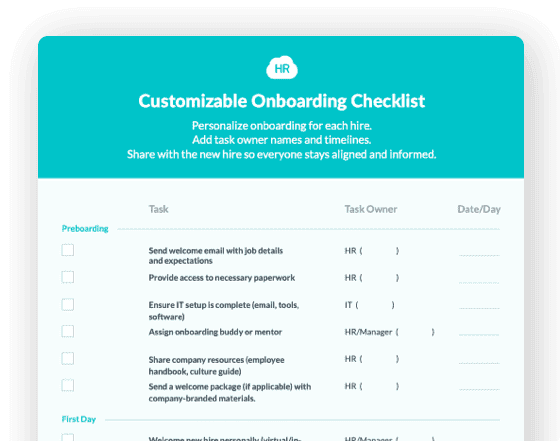
A Top Performer Program is a key part of talent management. People often call it a high-potential or high-achiever plan. It is a planned, structured system. It finds, trains, and keeps the most important employees in a company. These programs are more than just reward systems. They are full development plans. They help people who get great results grow faster. These employees also show the potential to become senior leaders later on.
Businesses use these programs because a small number of workers often drive most of the company’s success. Studies show that top performers are much more productive than average employees. In complex jobs, they can be up to 400 percent more productive. Because of this big difference, investing in these elite employees is a critical business choice. It is not just an optional HR activity.
For decision-makers, a successful Top Performer Program helps solve major business risks. These risks include finding new leaders and staying competitive. When you focus development funds on your best workers, you get the highest return. This makes sure you have a ready group of qualified leaders. They are prepared to take over essential roles. This lowers the cost of hiring outside the company and cuts transition time. Also, a clear, well-run Employee Development Strategies plan tells everyone that performance matters. It provides a clear path for ambitious employees to advance their careers. If you do not offer special growth plans for your best talent, they often leave. This is a big financial and strategic loss, especially in competitive fields. You must plan the structure and execution of these talent plans carefully. They need to be more than simple yearly bonuses. They must include special training, mentorship, and high-level projects that prepare people for bigger roles.
Key Points – Main Takeaways for Strategic Investment
Investing in high-potential employee development brings clear, measurable business results. Senior leaders can use these results to spend resources effectively. Understanding the main parts of these special plans is important.
Key takeaways about a Top Performer Program include:
Accelerated Leadership Pipeline:
The main goal is to create a deeper, more capable internal group of candidates for top senior positions. This greatly lowers the risk of unexpected leadership changes. It ensures the business keeps running smoothly.
Targeted Resource Allocation:
You put development money only on the employees most likely to become future leaders and deliver great results. This ensures a strong return on investment for training and coaching.
Enhanced Retention of Elite Talent:
High achievers always want new challenges and growth. Providing special talent management plans gives them unique chances, hard assignments, and executive mentorship. This is vital for keeping them interested and committed to the company.
Culture of High Performance:
Officially recognizing top contributors sets a clear bar for the whole company. This inspires other employees to work to join the program.
Improved Business Outcomes:
The high output and ability to innovate shown by these people directly lead to better operations, higher sales, and successful project delivery.
Data-Driven Selection:
Good programs use objective performance data, behavioral tests, and peer reviews. They do not use simple personal opinions to pick participants. This makes the process fair and honest. An effective program needs Performance Review Best Practices that correctly measure impact and future potential.
Value-Adding or Comparison Table – Program Differentiation
A Top Performer Program is very different from general training or standard recognition. It needs a distinct investment and strategic focus. This table shows the key differences between a standard approach and a special high-potential plan.
|
Feature |
Standard Employee Development |
Top Performer Program (TPP) |
Business Rationale for TPP |
|
Focus |
General skill improvement, compliance, basic job readiness. |
Strategic leadership ability, cross-functional expertise, capacity for innovation. |
Ensures a ready pipeline for top executive and critical leadership roles. |
|
Selection |
All employees, usually voluntary or required for a role. |
Highly selective, based on objective performance, leadership potential, and business impact. |
Puts investment on the talent with the highest return. |
|
Development Tools |
General workshops, standard online courses, required training. |
Executive coaching, specialized certifications, high-level stretch assignments, Mentorship Programs for Leadership. |
Creates deep, faster development of strategic skills. |
|
Time Horizon |
Short-term, role-specific needs. |
Multi-year commitment, focused on future roles two to three levels higher. |
Lowers long-term risk for succession and secures future competitive edge. |
|
Compensation |
Standard salary reviews, yearly bonuses based on job performance. |
Special rewards, stock units, higher yearly incentive goals, project-based bonuses. |
Proves the value of extraordinary work and helps keep them in the job. |
Best Practices – Actionable Tips for Program Success
The success of a high-achiever recognition initiative relies on how well you plan and run it. To make sure your program gives the most value, decision-makers should follow these critical tips.
Define "Top Performer" with Clarity and Rigor:
Use a 70/30 or 80/20 rule. Make sure only a very small part of your workforce is included. Base your selection on a mix of real performance data, proven leadership skills, and checks for future potential. Do not just reward past success. Focus on their ability to grow.
Ensure Executive Sponsorship and Visibility:
A Top Performer Program cannot work only as an HR task. The CEO and other senior leaders must be actively involved. They should act as mentors, teach development sessions, and review participant progress often. This high-level support shows the program’s strategic value and makes it more respected.
Implement Differentiated Development:
Do not make top performers take the same courses as everyone else. Their training must be special, challenging, and important to the company’s future strategy. This includes rotating them across different departments. It may involve having them manage a big company change. They might also act as an executive advisor on a major project. This method provides Leadership Training and Development that is truly elite.
Promote Transparency in Criteria, Not Participants:
Be clear with all employees about the rules you use for selection and the benefits participants get. This openness motivates others and fights against claims of favoritism. However, some companies choose to keep the list of actual participants secret. This helps manage internal dynamics and stops competitors from trying to hire them away. Employee Recognition and Rewards must be fair and visible.
Tie Program Results to Succession Planning:
The program’s outcome must feed directly into your company’s plans for leadership succession. Participants should be named as possible successors for specific roles on the company chart. This step proves the value of the special employee growth plans. It makes the program a vital business function.
Regularly Audit and Adjust the Program Design:
The business needs and required skills change quickly. At least once a year, review the program’s courses, selection rules, and results. Ask for feedback from participants, mentors, and executive sponsors. This ensures the plan stays relevant, strict, and aligned with company goals.
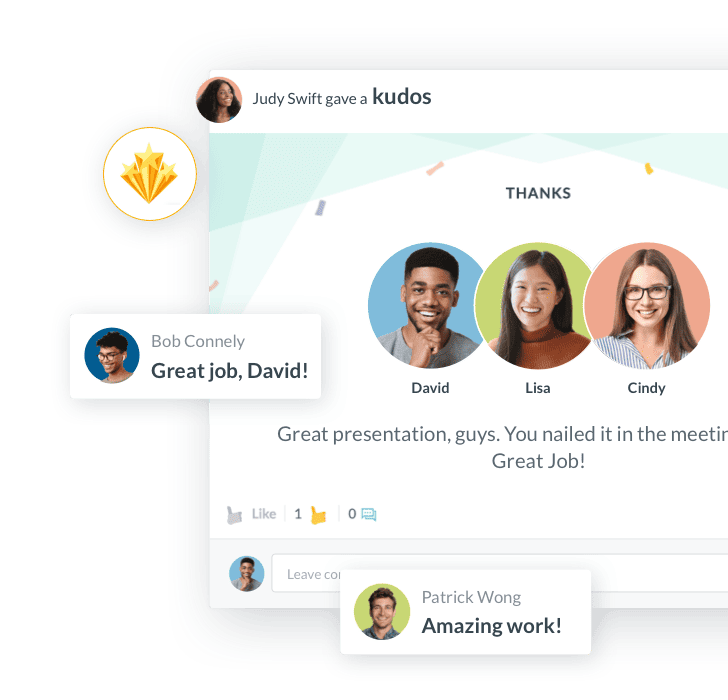
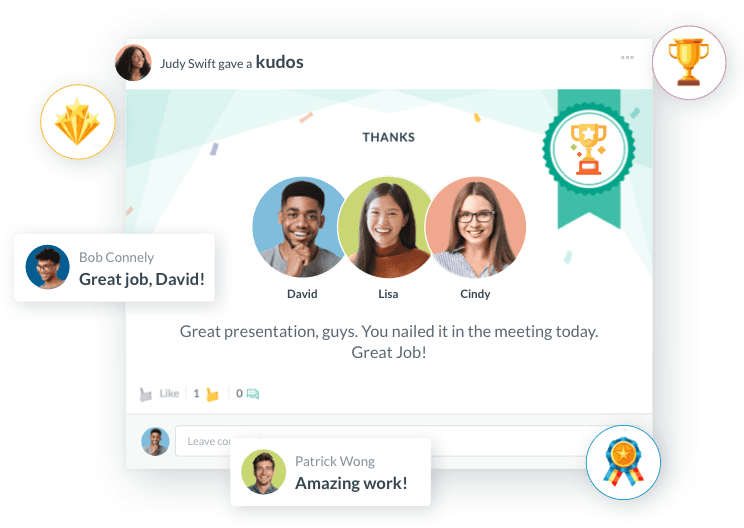
Pitfalls to Avoid – Common Mistakes That Undermine Success
Even well-meaning elite talent management strategies can fail. This happens if they fall victim to common errors. Decision-makers must be careful to keep the program strong and effective.
The "Crown Prince/Princess" Syndrome:
This is when participants are treated as untouchable. They may be given a promotion guarantee too early. This causes resentment among other employees. It can also make participants feel entitled. High potential means potential, not a guarantee.
Focusing Only on Past Performance:
A common mistake is rewarding people who did great in their current job. However, they may lack the skills or drive for complex senior leadership roles. The program must specifically look for potential, flexibility, ability to learn, and strategic thinking. It should not just focus on past metrics.
Failing to "De-select" Underperforming Participants:
The program needs a clear, public process for removing a participant who stops showing high potential. It must also remove those who fail to meet the development goals. Keeping poor-performing or uncommitted people hurts the program's belief and wastes money.
Lack of Differentiation in Rewards:
Giving participants only small or generic benefits shows a lack of serious commitment. For example, a slightly bigger bonus or a standard training class is not enough. The rewards, challenges, and training must be clearly better than those offered to the general staff.
The "Jumping Through Hoops" Curriculum:
Development activities must be important and meaningful. They should not just be a list of tasks to check off. Participants should not feel like they are only doing assignments to earn a badge. Every task, coaching session, or project should have clear, measurable value for the person and the business.
Industry Applications – Real-World Business Examples
The rules of a Top Performer Program work across many different industries. This proves that strategic high-potential plans are needed in complex, competitive environments.
Technology and Software Development (Rapid Growth Focus)
The tech sector fights hard for specialized, innovative talent. A Top Performer Program here focuses heavily on working across different teams and on new ideas. For example, a large software company might place high-potential engineers in the marketing department for six months. Their final project might be to create a simple product for a new business line. This prepares them for executive roles that need broad business knowledge. It also supports Organizational Change Management by bringing fresh, technical views to non-technical teams. The goal is fast leadership growth to match the pace of the market.
Financial Services and Banking (Risk and Succession Focus)
Financial companies work in strict regulatory environments. Succession planning for roles that involve risk management and compliance is a must-have. A banking high-potential plan would stress deep training in risk modeling, global rules, and ethical decision-making. Participants might join a merger and acquisition team. They could also be tasked with finding and fixing a major risk that the board identifies. The programs in this field often last many years. They are structured to build deep trust and knowledge of complex rules before someone moves into a role with major financial responsibility. See HBR on Building Executive Competencies for more on executive development.
Healthcare and Pharmaceuticals (Specialized Skill Focus)
In pharmaceuticals and healthcare, special skills are most important. These include research and development, clinical trials, or complex medical system management. A Top Performer Program would find high-potential scientists or clinical leaders. It would give them money and freedom to lead a high-stakes, internal research project. Their training would include executive communication. They would learn how to present complex science data to the board and investors. This prepares them for top roles like Chief Scientific Officer. The program offers the needed platform to bridge the gap between deep technical skill and Strategic Workforce Planning.
Implementation Plan – Step-by-Step Guide for Applying the Concept
Launching and managing a special employee growth plan needs a careful method. You must move from defining the plan to running it and checking it often.
Step 1: Secure Executive Alignment and Define Success
The program must start at the top. Get official approval from the CEO and the executive team. Define the program’s main goals. For example: "Fill 70% of all Director-level openings from internal staff within three years." Set clear, measurable goals (KPIs) to check the program's success. These include promotion time, retention rate of participants, and the quality of internal succession coverage.
Step 2: Establish Transparent and Objective Selection Criteria
Create a selection chart based on three main parts: past performance (the 'what'), demonstrated leadership skills (the 'how'), and potential (found through evaluations or leader interviews). Clearly set the minimum performance rating and the needed mix of behaviors. Train managers strictly on how to spot true potential, not just high results. This ensures consistency.
Step 3: Design the Differentiated Development Curriculum
Create a personalized development plan for each person. Focus on the 70-20-10 model: 70% learning through hard job experiences (stretch assignments), 20% through coaching and mentorship, and 10% through formal classes. The core plan must include projects across departments, shadowing executives, and solving at least one high-stakes, visible business problem.
Step 4: Implement and Monitor with Rigor
Start the program with a launch event led by an executive. This shows its importance. Assign a senior leader or HR partner to manage the program full-time. They will track progress, set up mentorship meetings, and ensure development plans are followed. Hold quarterly check-ins with the executive sponsors. This helps review progress and fix any resource problems.
Step 5: Integrate with Succession and Compensation
Formally link the successful completion of the Top Performer Program with the company’s succession charts. Identify participants as "ready now" or "ready in one to three years" for specific jobs. Make sure the compensation and rewards package is big enough to clearly show the difference in the participants' contribution. This includes equity or long-term incentives. This reduces the chance of their leaving.
Future Outlook and Trends – What’s Next and How to Prepare
The future of high-potential employee development means more focus on custom plans, using technology, and caring more about flexibility than strict structure. Decision-makers should get ready for these changing trends in talent management.
Hyper-Personalization of Development:
Future Top Performer Programs will use AI and advanced data even more. This helps check an employee’s learning style, skill gaps, and the best assignments for their specific growth. Technology will allow quick changes to the plan based on real-time performance feedback. This makes the experience truly custom-made.
The Rise of "Fluid Talent Pools":
Companies are moving away from a fixed, one-year group of participants. They are switching to flexible talent pools. Employees move in and out of the high-potential group based on constant performance checks and their readiness for the next challenge. This allows for greater flexibility. It makes sure money is always spent on the most ready and capable people at any moment.
Emphasis on Digital Fluency and Agility:
The main skills of future top performers will increasingly be digital literacy. They will need the ability to lead remote or hybrid teams. They must also be great at managing data. Training must focus on critical thinking, managing complexity, and adopting technology. The focus will be less on what a leader knows. It will be more on how fast they can learn and adjust to totally new business models. Investing now in flexible, data-driven HR technology is key to managing these complex, dynamic programs well.
Keep Reading
Employee Engagement Intranet Tools: A Practical Buyer's Guide for 2025
"We improved our communication effectiveness by 40% within the first 90 days of
Best Digital HR Solutions for Workforce Engagement in 2025: Complete Buyer's Guide
Modern workforce engagement software isn't just about surveys and recognition. It's about
How HR Cloud Is Shaping the Future of HR in Senior Care
At the 2025 LeadingAge Annual Meeting in Boston, one conversation is taking centerstage —
Ready to streamline your onboarding process?
Book a demo today and see how HR Cloud can help you create an exceptional experience for your new employees.






